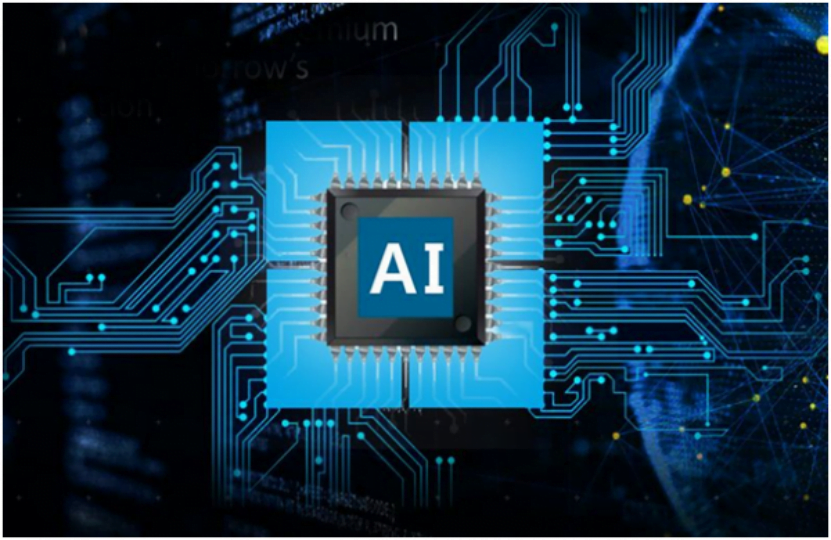NVIDIA has emerged as a leader in the early stages of the artificial intelligence revolution. However, now, many competitors are attempting to narrow the gap.
Established heavyweights in the chip industry like AMD and Intel are investing billions of dollars to enhance their AI products, while numerous startups are attracting investors who are eager to bet on the next chip industry giant. Meanwhile, cloud computing companies like Amazon and Google are also developing their own custom-designed chips in hopes of becoming more significant players in this field.
The Origin of AI Chips - OpenAI and NVIDIA
The current boom in artificial intelligence began in late last year when OpenAI’s ChatGPT emerged, creating a series of “miracles” in just a few months and capturing the public’s imagination. This unprecedented fervent attention led to a surge in investments in chips capable of creating and deploying ChatGPT and other so-called generative AI language model systems.
NVIDIA is a pioneer in producing such AI chips, partly due to its extensive background in developing and manufacturing graphics processing units (GPUs) for electronic gaming, which have also become increasingly important in AI computing. The latest wave of market frenzy has boosted NVIDIA’s sales performance and propelled its valuation to over a trillion dollars in just a few months.
NVIDIA’s founder, Jensen Huang, has openly stated that artificial intelligence is a revolutionary technology of equal importance to personal computers and smartphones. He said, “We are at the starting line of AI, and every industry will be revolutionized and reborn.”
According to analysts’ estimates, this California-based global semiconductor industry “dominant force” currently controls over 80% of the lucrative GPU market, which is driving the rise of the AI wave. However, as more and more companies are now attempting to follow closely behind and seize a share of the AI chip market, maintaining NVIDIA’s market position is by no means an easy task.
AI Chips of AMD and Intel
Both AMD and Intel have made significant acquisitions in recent years to strengthen their AI product lines. In 2022, AMD acquired Xilinx for $35 billion. Xilinx is a chip design company that can be reprogrammed post-production and is adept at AI computing. Intel, on the other hand, acquired Israeli AI startup Habana Labs for around $2 billion in 2019 and is currently producing its chips.
AMD AI Chip
AMD is currently seen as the closest competitor to NVIDIA. For a long time, AMD has been NVIDIA’s “rival” in the gaming graphics card field. Now, AMD also has its own series of AI chips and has deep relationships with large data center operators who crave computational power.
Forrest Norrod, Head of Data Center Hardware at AMD, expressed surprise at the initial wave of generative AI led by ChatGPT but stated that the industry ultimately wants NVIDIA to have a competitor. “There are many people eager to have other choices,” he pointed out.
AMD has been planning to produce a new generation of AI chips since last year and released the AI chip MI300 series in June this year. Compared to the previous generation MI250X, the AI performance (TFLOPS) of MI300 is expected to increase eightfold, specifically designed to power complex algorithms for AI models like ChatGPT.
Gus Richard, an analyst at Northland Capital Markets, recently estimated that over time, AMD’s market share in the AI chip field could reach 20%. This is due to both the advantages of its products and the world’s need for a second supplier beyond NVIDIA.
Intel AI Chip
In addition to AMD, Intel is also poised to disrupt the market. The company has recently refuted the notion that only NVIDIA’s chips can run generative AI. In a blog post at the end of last month, Intel boasted about its recent performance in AI chip development, claiming that its chips could be a “compelling choice for customers looking to break free from closed ecosystems.”
Both AMD and Intel have made significant acquisitions in recent years to strengthen their AI product lines. In 2022, AMD acquired Xilinx for $35 billion. Xilinx is a chip design company that can be reprogrammed post-production and is adept at AI computing. Intel, on the other hand, acquired Israeli AI startup Habana Labs for around $2 billion in 2019 and is currently producing its chips.
In fact, compared to NVIDIA, both Intel and AMD have their own advantages. They can provide open-source alternatives at the software level, which may attract some customers with specific needs. Lisa Su, CEO of AMD, stated in an interview last month that AMD will offer a “menu” that includes all the components needed to build AI large models. Customers can freely choose the components they need and connect them through industry standards. “We are confident that many customers prefer to have choices and would like to customize the relevant components based on their data center requirements.”
Startups in the AI Chip Industry - Mythic and Tachyum
In addition to the traditional chip industry giants, venture capital investors have placed billions of dollars in bets on the chip industry this year, hoping to enter this emerging market. AI chip startups Mythic and Tachyum have raised significant new investments this year after years of investment.
According to Crunchbase data, chip startups attracted $8.3 billion in 2021 and $7.9 billion in 2022. While these figures are not insignificant, they lag behind other hot industries such as cryptocurrency. However, this year, AI is virtually the only focus for many venture capitalists in the technology sector.
The leading advantage of NVIDIA has not discouraged newcomers.
UK-based company Graphcore has raised $750 million from investors, and its CEO, Nigel Toon, stated that in order to compete with NVIDIA, Graphcore is developing a more powerful AI processor.
Toon pointed out that Graphcore has been particularly successful in Asia. Due to escalating geopolitical tensions, US authorities have restricted NVIDIA from selling its most advanced chips to China, and Chinese companies have been seeking alternatives to US suppliers.
“NVIDIA needs to share a portion of their market value,” Toon quipped, referring to NVIDIA’s recent entry into the trillion-dollar club in terms of valuation.
Amazon and Google's Layout in AI Chips
Amazon’s cloud computing division, AWS, has recently been actively promoting its in-house developed chips as more affordable alternatives to NVIDIA chips, attracting large internet companies such as Airbnb, ByteDance, and Snap. AWS’s AI-specific chips currently under development include Inferentia and Trainium, aiming to provide convenience for developers to run large language models in the cloud.
Nafea Bshara, an executive at AWS, stated that ByteDance saved up to 60% of the deployment costs for their AI models by using Amazon’s chips.
He pointed out, “Amazon understood the potential of artificial intelligence many years ago. We realized then that we needed to help customers control their computing costs so that AI could be accessible to customers of all sizes and industries.”
Although Amazon may seem to lag behind Microsoft and Google in terms of investment and development in the field of AI, Amazon CEO Andy Jassy recently stated that Amazon will have a real advantage in the AI market through other services like Bedrock, custom chips, and CodeWhisperer.
On Google’s side, in April of this year, it confirmed the transfer of its dedicated team responsible for AI chip development to the Google Cloud division to enhance the competitiveness of its cloud computing team and catch up with its strong rival AWS. In early April, Google also announced that when 4,000 fourth-generation TPUs are connected in series, the operating speed of the supercomputer they build is 1.7 times faster than an equivalent machine using NVIDIA A100 GPUs, with a 1.9 times higher efficiency.
The Future Trends of the AI Chip Industry
According to chip industry consulting firm International Business Strategies (IBS), global semiconductor revenue is expected to decline by 9% to approximately $511 billion this year.
However, there is a widespread industry expectation that the demand for AI chips will further expand the scale of the industry in the coming years. Earlier, IBS predicted that the revenue of the chip industry would double to around $1.1 trillion by the end of this decade, driven by advancements in 5G networks, autonomous vehicles, and other technologies. Now, with the boost from AI, IBS has raised its revenue expectations by an additional $150 billion, projecting it to reach approximately $1.25 trillion by 2030.
Handel Jones, CEO of IBS, stated, “Generative AI is one of the biggest events the semiconductor industry has experienced to date.”
According to estimates by Morgan Stanley analysts, the annual sales of the AI chip market are expected to reach around $43 billion this year, accounting for approximately 8% of the total chip industry sales. Within four years, the market share of AI chips in the overall industry is expected to roughly double, with revenue reaching $125 billion.








